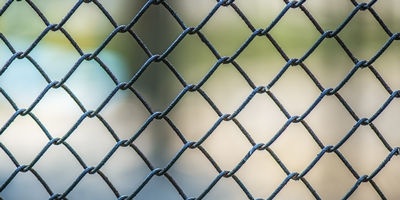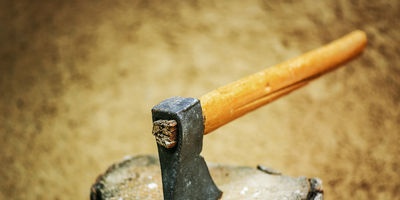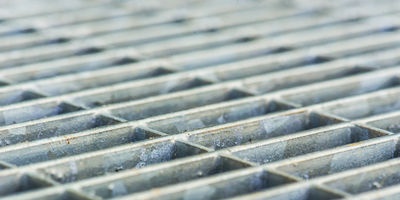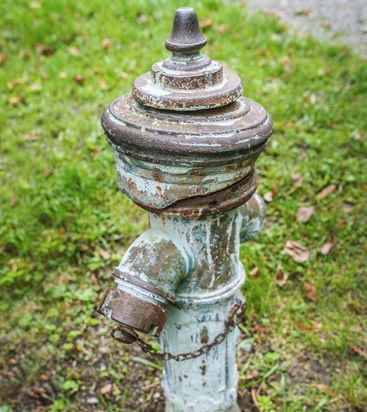|
 We often do not realize the essence of the significance of many familiar notions. Let's try to focus on the thought that we know about iron. It turns out that it surrounds us from all sides. The walls of the new large houses are pierced with steel bars that make up the frame of their reinforced concrete body. We often do not realize the essence of the significance of many familiar notions. Let's try to focus on the thought that we know about iron. It turns out that it surrounds us from all sides. The walls of the new large houses are pierced with steel bars that make up the frame of their reinforced concrete body.
The ceilings have reinforced concrete and steel beams. Let us recall an elevator shaft, railings, roofs, water mains, sewers, gas, televisions, baby carriages, fountain pens, needles. And the bulk of hydroelectric power plants, factories, blast furnaces, high voltage transmission lines? In my mind's eye there are images of rapidly flying jet liners hanging over the ice fields of the dark contours of icebreakers, the melody of space grows in my ears - the inexpressible whistle of our starships cutting through the atmosphere ... A fastidious connoisseur will say that we have invaded the kingdom of aluminum, titanium, zirconium coatings. .. Yes, this is their kingdom, but to this day the skeleton of many of these structures is made of iron. It promises to continue to lend its friendly support to other metals. And the word "iron" has become synonymous with strength.
 Iron is also within us. The body of every adult contains about 3 g of iron, two-thirds of which is part of hemoglobin - the respiratory pigment in blood. This compound acts as a carrier of oxygen from the air in the lungs to the tissues of our body. This means that we owe the gland that we breathe. Iron is also within us. The body of every adult contains about 3 g of iron, two-thirds of which is part of hemoglobin - the respiratory pigment in blood. This compound acts as a carrier of oxygen from the air in the lungs to the tissues of our body. This means that we owe the gland that we breathe.
Native iron hits the earth from space. True, it contains cobalt, nickel, chromium and some other elements, but it is metallic iron, ready for use. This is how it could fall into the hands of our distant ancestor.
The plastic properties of some native metals - gold and platinum - have been known to people for a long time. But this property began to be systematically used only in the Bronze Age, when copper-based alloys came into use. The craft of processing metals arose, among which there was iron, which was rare at that time.
Iron is considerably harder than copper, gold and platinum. Making tools from pieces of meteorite iron is difficult. It can be assumed that the iron from the fragments of meteorites was used to make fire, since when an iron object strikes the sharp edge of a hard stone, sparks arise — pieces of iron flashing in the air. These sparks are capable of setting fire to dry porous material - moss, crushed reeds, cotton wool ...
Iron objects can only survive in very dry climates. Otherwise, they will rust. During the excavation of ancient Egyptian structures, which were built without a binder solution between the masonry stones (they were simply tightly fitted to each other by cutting and grinding), several iron objects were discovered. The symbolic snake and the rough blade of the knife are made of iron, the composition of impurities of which is close to the composition of meteoric iron.
 In the masonry of the Khufu pyramid, built in 2900 BC, a steel chisel is very well preserved. Its composition differs significantly from the composition of meteorite iron (90% Fe, 9% Ni and 0.6% Co). At the same time, iron smelting in Egypt, judging by the bas-reliefs and the age of the discovered slags, began only 1700 - 1500 BC. The origin of the bit has not been clarified. The Egyptians called iron "Waaepere"which means "Heavenly origin". In the masonry of the Khufu pyramid, built in 2900 BC, a steel chisel is very well preserved. Its composition differs significantly from the composition of meteorite iron (90% Fe, 9% Ni and 0.6% Co). At the same time, iron smelting in Egypt, judging by the bas-reliefs and the age of the discovered slags, began only 1700 - 1500 BC. The origin of the bit has not been clarified. The Egyptians called iron "Waaepere"which means "Heavenly origin".
In ancient times, iron was highly valued. One of the Egyptian pharaohs in a letter to the Hittite king asks to send iron in exchange for gold, of which he has as much, "like sand in the desert."
Homer in his Odyssey speaks of iron as an expensive and laborious metal, and gives a recipe for hardening steel: "The quick-witted kovach, having made an ax or an ax, immerses metal in water (having heated it on fire so that it has a double strength) ...".
Pliny the Elder (1st century AD) in "Natural History" writes that with the help of iron they build houses, split stones and do many other things in life. But they create wars, robberies and murders. And the most criminal thing about the use of iron is that it is given feathered wings so that it can fly further and bring death to people (I mean arrows and spears).
In many museums around the world, jewelry that has decayed from time is kept, in which gold and platinum are combined with pieces of rust, which was once iron.
The secrets of the art of working with iron were known to many Egyptian jewelers. So, in the tomb of Tutankhamun, which miraculously survived from the hands of robbers to this day, scientists discovered a large number of jewelry made of gold of an extraordinary cherry hue. A detailed study showed that this color is peculiar only to the surface of the decoration, and inside the gold is the usual yellow color.
 By the time of the study, the American scientist Robert Wood was passing through Egypt. He was asked to try to solve the secret of cherry gold. Taking with him a nail from an ancient staff, Wood returned to America. Soon he said that iron was to blame for everything: with a certain cooling mode of gold jewelry castings with an admixture of iron, their surface is covered with a film firmly bound to the metal. This technique was repeated, and it was named Wood's gold. By the time of the study, the American scientist Robert Wood was passing through Egypt. He was asked to try to solve the secret of cherry gold. Taking with him a nail from an ancient staff, Wood returned to America. Soon he said that iron was to blame for everything: with a certain cooling mode of gold jewelry castings with an admixture of iron, their surface is covered with a film firmly bound to the metal. This technique was repeated, and it was named Wood's gold.
With significant additions of iron to gold, products become brittle, but acquire a beautiful pale green or blue color. China is famous for such products.
But back to the hardware. Besides the meteorite, there is native iron. Its composition is close to meteorite. It occurs naturally in veins and blotches. It was found in the basalts of Greenland and igneous rocks of the Auvergne in France, and it was also found in North and Central America.
Native iron is rare in nature, but in general there is a lot of iron on Earth. There are huge deposits of minerals containing iron. Basically, its iron oxides - brown iron ore, red iron ore, iron luster (ruby mica), hematite, bloodstone. These are all ores named by color. There are other ores, already named by their properties - magnetic iron ore, chromium iron ore, pyrite (iron pyrite), iron vitriol.
We have deposits of ores of the first group in the Urals, in Siberia. Large deposits of magnetic iron ore are located near Kursk and in the Urals.
It is difficult to estimate the total reserves of iron on Earth. The amount of iron in the earth's crust is estimated at 5.1% of its weight. Only aluminum is more widespread - it is 8.8% in the earth's crust.
In our country, the reserves of iron ore are literally inexhaustible.
The amount of iron found in stone meteorites ranges from 10 to 1%. Meteorites are often found on the ground much later than the time of their fall. These are mainly iron-nickel meteorites.
Now astronomers constantly observe the sky and regularly look for the remnants of falling meteorites. More stone ones are found among them - 92%. Stone meteorites are identical in composition to the volcanic rocks of the earth's crust, and iron-nickel ones can give an idea of the composition of the deeper layers of our planet. Today, there are several theories of the origin of the solar system and planets. We will not analyze them, but it is safe to say that none of these theories can deny the existence of significant amounts of metallic iron in space. But in order to understand why iron, and not other metals, received such an honor, one must turn to the concepts of nuclear physics.
Y.S. Lopatto - Iron
Read now
All recipes
|
 We often do not realize the essence of the significance of many familiar notions. Let's try to focus on the thought that we know about iron. It turns out that it surrounds us from all sides. The walls of the new large houses are pierced with steel bars that make up the frame of their reinforced concrete body.
We often do not realize the essence of the significance of many familiar notions. Let's try to focus on the thought that we know about iron. It turns out that it surrounds us from all sides. The walls of the new large houses are pierced with steel bars that make up the frame of their reinforced concrete body. Iron is also within us. The body of every adult contains about 3 g of iron, two-thirds of which is part of hemoglobin - the respiratory pigment in blood. This compound acts as a carrier of oxygen from the air in the lungs to the tissues of our body. This means that we owe the gland that we breathe.
Iron is also within us. The body of every adult contains about 3 g of iron, two-thirds of which is part of hemoglobin - the respiratory pigment in blood. This compound acts as a carrier of oxygen from the air in the lungs to the tissues of our body. This means that we owe the gland that we breathe. In the masonry of the Khufu pyramid, built in 2900 BC, a steel chisel is very well preserved. Its composition differs significantly from the composition of meteorite iron (90% Fe, 9% Ni and 0.6% Co). At the same time, iron smelting in Egypt, judging by the bas-reliefs and the age of the discovered slags, began only 1700 - 1500 BC. The origin of the bit has not been clarified. The Egyptians called iron "Waaepere"which means "Heavenly origin".
In the masonry of the Khufu pyramid, built in 2900 BC, a steel chisel is very well preserved. Its composition differs significantly from the composition of meteorite iron (90% Fe, 9% Ni and 0.6% Co). At the same time, iron smelting in Egypt, judging by the bas-reliefs and the age of the discovered slags, began only 1700 - 1500 BC. The origin of the bit has not been clarified. The Egyptians called iron "Waaepere"which means "Heavenly origin". By the time of the study, the American scientist Robert Wood was passing through Egypt. He was asked to try to solve the secret of cherry gold. Taking with him a nail from an ancient staff, Wood returned to America. Soon he said that iron was to blame for everything: with a certain cooling mode of gold jewelry castings with an admixture of iron, their surface is covered with a film firmly bound to the metal. This technique was repeated, and it was named Wood's gold.
By the time of the study, the American scientist Robert Wood was passing through Egypt. He was asked to try to solve the secret of cherry gold. Taking with him a nail from an ancient staff, Wood returned to America. Soon he said that iron was to blame for everything: with a certain cooling mode of gold jewelry castings with an admixture of iron, their surface is covered with a film firmly bound to the metal. This technique was repeated, and it was named Wood's gold.




